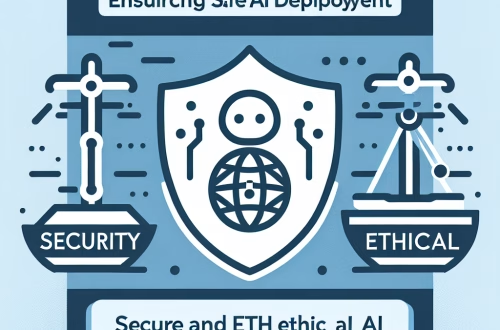Real-time Anomaly Detection with AWS AI
Summary:
Real-time anomaly detection with AWS AI helps businesses and developers identify unusual patterns in data immediately, allowing for swift corrective actions. AWS offers powerful, scalable machine learning services like Amazon Lookout for Metrics and Amazon SageMaker to automate detection and reduce manual monitoring. This technology is particularly valuable in industries like finance, healthcare, and IoT, where anomalies can indicate fraud, system failures, or security breaches. Integrating this solution enhances operational efficiency, reduces costs, and improves decision-making by leveraging AI-driven insights.
What This Means for You:
- Proactive issue resolution: Real-time anomaly detection enables you to address problems as they occur, minimizing downtime or financial losses. For example, in e-commerce, spotting fraudulent transactions instantly can prevent revenue loss.
- Actionable insights with minimal setup: AWS AI services require no deep AI expertise—pre-trained models make it easy to start. Focus on setting up proper data pipelines to feed into AWS tools for immediate results.
- Cost-effective scalability: Instead of building custom solutions, AWS’s pay-as-you-go model allows businesses of any size to implement anomaly detection. Monitor cloud expenses to avoid unexpected charges.
- Future outlook or warning: While real-time detection improves responsiveness, it relies on quality data and continuous model tuning. Businesses must stay updated with AWS’s evolving AI tools to maintain accuracy as threats and data patterns change.
Real-time Anomaly Detection with AWS AI
Understanding the Technology
Real-time anomaly detection with AWS AI involves using machine learning models to identify deviations from normal data patterns as they occur. AWS provides multiple tools for this purpose, including Amazon Lookout for Metrics, which automatically detects anomalies in business metrics, and Amazon SageMaker, which allows custom model deployment. These tools employ techniques like statistical analysis, clustering, and deep learning to process streaming data from sources such as IoT sensors, logs, and transaction records.
Best Use Cases
This technology is ideal for:
- Fraud Detection: Financial institutions use real-time analysis to flag suspicious transactions before they complete.
- IT Operations: Cloud monitoring tools detect server performance issues, preventing outages.
- Industrial IoT: Sensors in manufacturing equipment alert teams to potential failures, enabling predictive maintenance.
Strengths of AWS AI for Anomaly Detection
AWS offers several advantages:
- Scalability: Handles millions of data points with low latency, suitable for large enterprises.
- Integration: Works seamlessly with AWS data services like Kinesis, Redshift, and S3.
- Accessibility: Pre-built models reduce the need for AI expertise, while SageMaker supports customization.
Limitations and Challenges
Despite its benefits, AWS’s anomaly detection has limitations:
- Data Quality Dependency: Inaccurate or incomplete data leads to false positives/negatives.
- Cost at Scale: High-volume data streams can increase expenses significantly.
- Black-Box Nature: Some AWS models lack transparency, making troubleshooting difficult.
Implementation Tips
To maximize effectiveness:
- Start with a clear definition of “normal” behavior for your data.
- Use AWS’s built-in visualization tools to refine thresholds.
- Combine automated alerts with human review for critical systems.
People Also Ask About:
- How does AWS AI detect anomalies in real time? AWS services use machine learning models trained on historical data to identify deviations. For example, Lookout for Metrics applies statistical algorithms to incoming data streams, flagging outliers instantly.
- Is coding knowledge required to use AWS for anomaly detection? Not necessarily—services like Lookout for Metrics offer no-code setups, while SageMaker requires Python/R for custom models.
- What industries benefit most from this technology? Finance, healthcare, e-commerce, and industrial sectors gain the most due to their high-stakes data environments.
- Can AWS anomaly detection work with on-premise data? Yes, AWS offers hybrid solutions like AWS Outposts to analyze on-premise data in near-real-time.
Expert Opinion:
Real-time anomaly detection is becoming indispensable as data volumes grow, but its effectiveness hinges on strategic implementation. Organizations must balance automation with human oversight to avoid over-reliance on AI. AWS’s services democratize access but require continuous monitoring to adapt to new anomaly patterns. Future advancements may focus on explainable AI to address transparency concerns.
Extra Information:
- Amazon Lookout for Metrics: A dedicated service for automated anomaly detection with built-in root-cause analysis features.
- Amazon SageMaker: Enables building, training, and deploying custom anomaly detection models at scale.
Related Key Terms:
- Automated fraud detection using AWS AI services
- Real-time IoT anomaly detection in AWS cloud
- AWS machine learning for predictive maintenance
- Amazon Lookout Metrics for business analytics
- Cost-effective anomaly detection solutions AWS
Check out our AI Model Comparison Tool here: AI Model Comparison Tool
*Featured image generated by Dall-E 3





